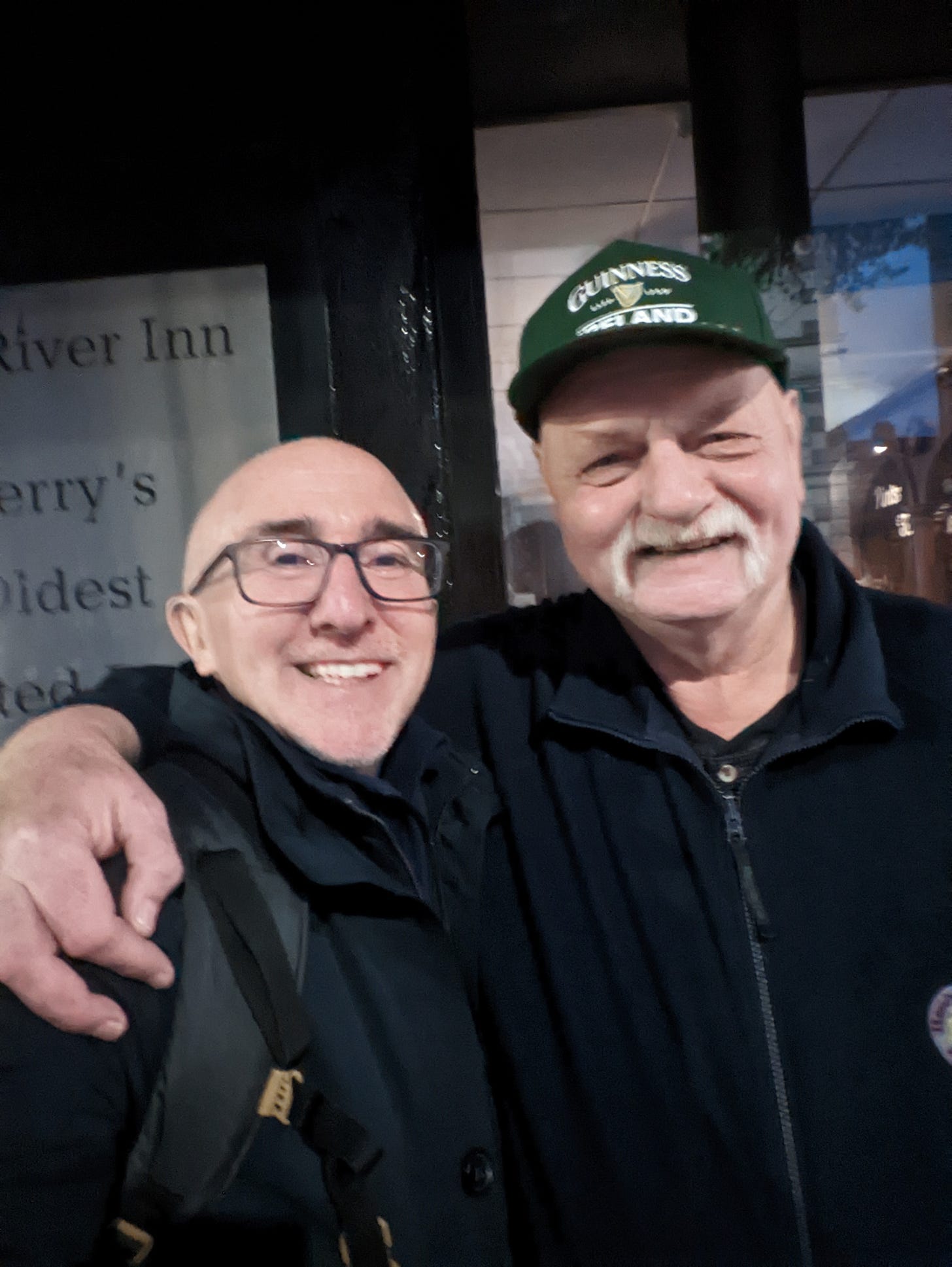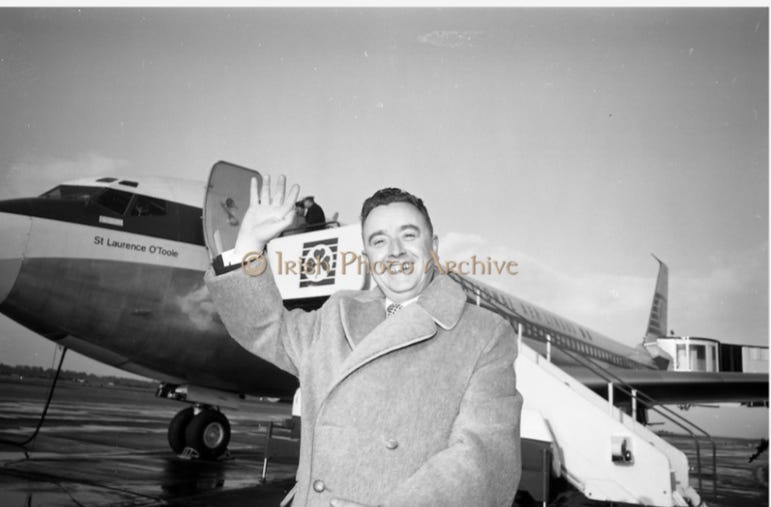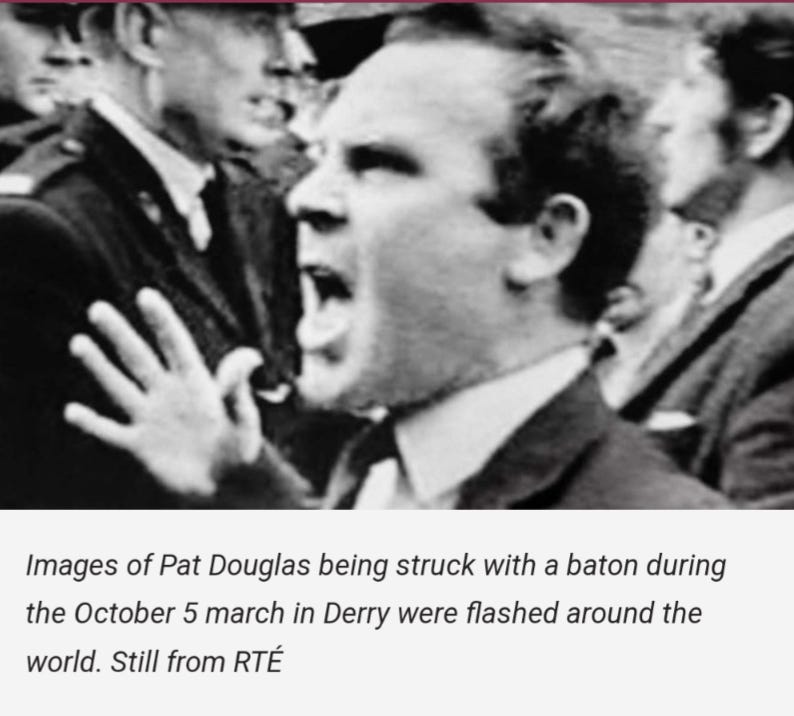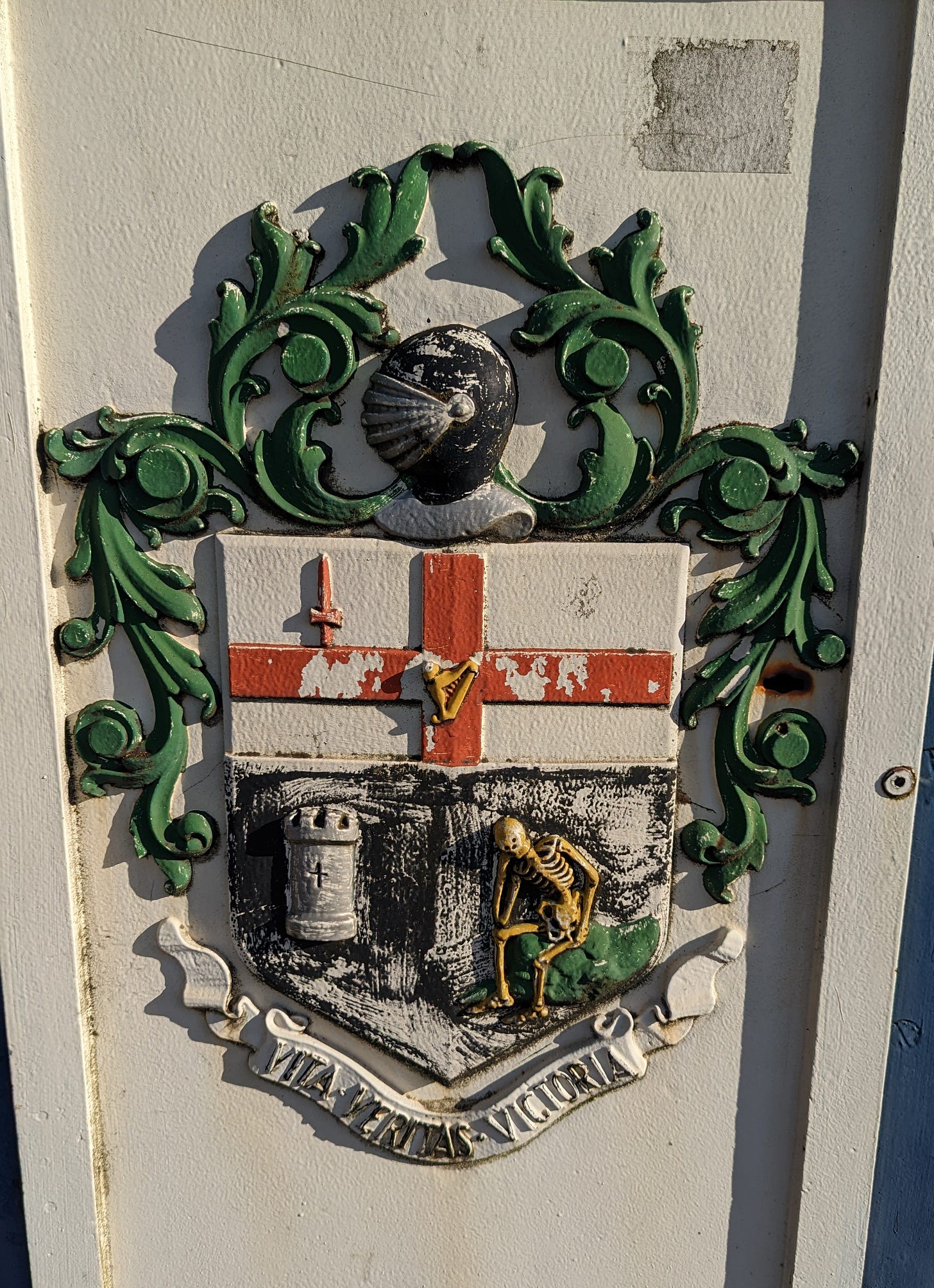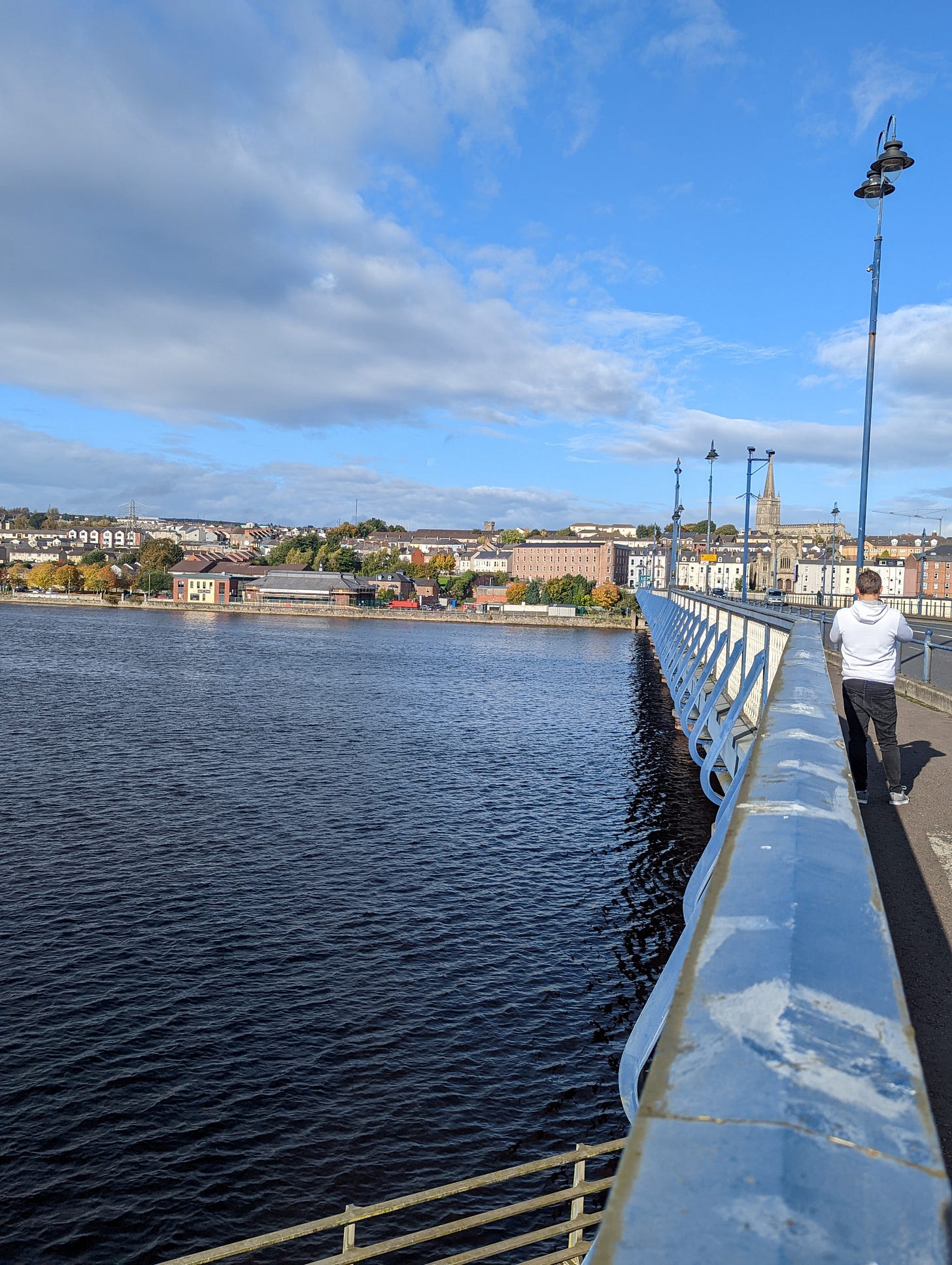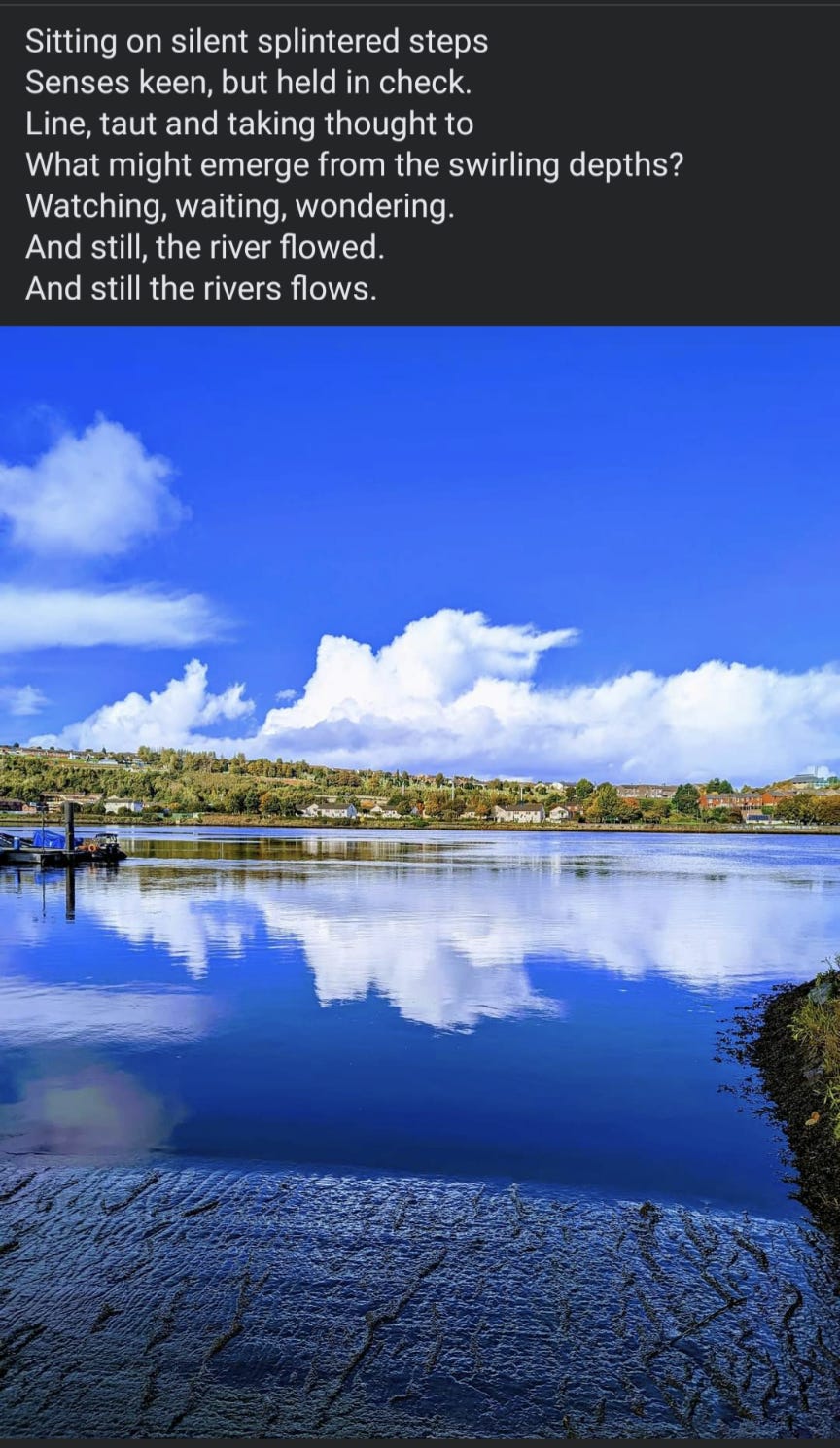The Bridge
I was reflecting last night, after my latest video call with my friend Gerry from Derry, that our conversations are like a bridge to our shared past as well as connecting us today. This led me to thinking about bridges in Derry and their symbolic and practical importance.
Myself and Gerry from Derry meeting again after 40 years
On my recent trip to Derry, I was experiencing that mixture of sadness, excitement and anticipation, peculiar to revisiting a place of such signifance as the town you grew up in.
As the Airporter coach came closer to Derry's outskirts, the memories began to flow. We passed Altnagelvin Hospital , where I had my tonsils out around 1967, and where 6 years later I was taken and treated for a hairline skull fracture, after being attacked with an iron bar by a trio of sectarian thugs. Singled out and targeted by virtue of the blazer I was wearing - and no, they weren't the fashion police.
We passed by Ebrington Terrace where I first met Gerry. The Northern Ireland Housing Executive (NIHE) had an office there in a converted terraced house. I also met my first wife there. She worked on the public counter, I was a clerical officer (or "squiggler", as one of the older ladies called us, due to her contention that we spent so much of our time “squiggling” on bits of paper.)
It was my first "proper" job after my sterling efforts to ensure that my academic promise was never reflected in anything less than mediocre achievement. Much like my father's hopes of me being an Irish Dancer were dashed when that well known and "flamboyant" dance teacher Brendan de Glinn intoned (he always intoned) that "Seamus would be a grand little dancer - if only he would lift his legs higher." I must have shown some promise though, as somewhere among my effects, I still have a yellowing signed photo of a very young Bing Crosby, given to me by Mr de Glinn, in recognition for something or other. What 12 year old wouldn't have been thrilled with this treasured memento? It having been, as Mr de Glinn intoned , “personally handed to me by my very good friend Bing himself, during my recent trip to the US”
Anyway, Ebrington Terrace would also be significant as I met, and worked alongside men and women who served in the RUC Reserve and the UDR. I had met a couple of young RUC officers as a result of that sectarian attack and they were the first ones to challenge my belief that everything was black and white, or rather orange and green. That Green wasn't always good, and Orange wasn't all bad. It's harder to hate someone who you know, from direct experience, is just another human being like you - albeit with different views and opinions on how the world is or should be. It's no accident that those who peddle hatred will always dehumanise those they seek to demonise.
And on went the coach, down Distillery Brae and on to Duke Street. We were still in the Waterside. Derry is split (amongst many other things) by the Foyle River. There's the Waterside on the east bank and the Derry or City side occupying the west bank. I believe the demographics are more blurred now, but back in the day - the Waterside was predominantly protestant and the City side, largely catholic.
We lived in a place called Prehen Park. One of the few mixed areas, further out along the east bank, in the direction of Strabane.
Duke Street is where the world saw the brutality of the police, in particular the B Specials as they refused to allow a peaceful Civil Rights March to proceed to Craigavon Bridge, on 5th October 1968 (11 days before my 11th birthday and 6 weeks before my father died). The march was called to protest against discrimination in housing and employment and for the catholic population to have the same voting rights as their protestant counterparts. They intended to march over the Craigavon Bridge and rally over in the City side.
While the Civil Rights marchers called for change, the Apprentice Boys of Derry said they would march too...their intention being to maintain the status quo. All marches were then banned and the police and B Specials held the line at Duke Street to stop the march reaching the bridge. They deployed their batons with some considerable force and at one point the TV cameras caught the moment when a protester Pat Douglas, was brutally batoned in the groin, presumably for the offence of trying to reason with the police. This whole sorry spectacle is sometimes cited as the beginning of "The Troubles”, though the “Battle Of The Bogside” over on the City side the following August is also a contender for that dubious honour.
Meanwhile, back on the coach, the flow of memories had become a cascade, as we passed the railway station and approached the Craigavon Bridge. When I was growing up, Derry only had the one bridge, not the three we have now. We always knew it as just"The Bridge". As a boy, I loved the imagery of the Derry Coat of Arms that adorned each of the ornate lampposts on the bridge.
Like everything else here there is symbolism in the images. As a friend of mine once remarked “Everything in the fecking place is symbolic, and if you ask me, it's all just a load of auld symbolics!”
The cross and sword are symbolic of London and it's connection with Derry, though there are few that call Derry, Londonderry. It became another way of determining what foot someone kicked with - a left footer being catholic. If you called it Derry, you could be a prod or a taig, but if you called it Londonderry, you were definitely a prod.
The three turreted castle is supposedly the fort of one of the old Gaelic chieftains and the skeleton represents a Norman Knight who languished in captivity in that same keep , until he was starved to death. The coat of arms were confirmed in 1623, but not “officially” granted until 1953 when the harp shown in this version was removed. This was presumably because the harp is a potent symbol of Irish national identity, and the Northern Irish powers that be at the time would be appalled at being thought of as Irish. More auld symbolics …
The Bridge, named after N Ireland's first prime minister, Lord Craigavon, was finished in 1933 is one of the few double decker bridges in Europe, the lower deck having originally had tracks laid for freight trains, before being converted to a road in 1968.
It was on this bridge in 1977, that I heard two women on the bus discussing Derry's sensation at that time, Dopey Dick, the orca who had somehow found his way up the Foyle and who I could sometimes see from my bedroom window. “Jesus Majella, I hope we don't see thon Dopey Dick” said one to the other, “for am wile scared of whales!” Of all the things to be scared of in Derry in those days, I never expected cetaceans to figure on the list.
And as the coach entered the lower deck, my eyes widened and filled with tears as I saw the Foyle in all its deep and mysterious power and beauty. The river whose banks I walked along countless times, the expanse across which, I on the east side, could hear the clamour on the west side as the violence, long simmering during the long hot summer of 1969 finally erupted in the Battle of The Bogside. The river where I found rare peace in its ever changing continuity as I sat for hours, fishing for fluke and eels.
While there, I wrote this short poem in response to those memories
There is more to say, about the Peace Bridge and the Foyle Bridge, but those stories are for another day …




